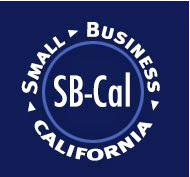--------------------------------------------
AB1083 has passed the legislature and been signed by the Governor requiring that all health benefits provided by employers not exceed a 60 day waiting period for enrollment. This differs from the ACA which has a 90 day waiting period. This will take effect January 1st, 2014
--------------------------------------------
The SBA has had a strong lending year. See below for numbers from the Acting Administrator.
Scott Hauge
President
Small Business California
2311 Taraval Street
San Francisco, CA 94116
shauge@cal-insure.com
415-680-2188
Another Strong Year for SBA Lending in FY 2013
by Jeanne Hulit, Acting SBA Administrator
Small businesses are the engine of our economy, and they create about two out of every three net new private sector jobs in the United States. At the U.S. Small Business Administration (SBA), our mission is to make sure that small business owners have the tools they need to do what they do best—providing great products and services, creating jobs and serving America’s communities in the process.
At SBA, one of the most critical things we do is make sure that small business owners have access to the capital they need to start and grow their business. Since President Obama took office, SBA has supported more than $126 billion in lending to more than 260,000 small businesses and entrepreneurs. This includes two record years of delivering over $30 billion annually in loans in FY 2011 and FY 2012.
FY 2013 has been another strong year for SBA lending, cumulatively supporting more than $29 billion in lending to America’s small businesses. We had an incredibly successful year and are proud of the work we did to support small businesses in this country.
Let’s take a quick look at some relevant numbers:
by Jeanne Hulit, Acting SBA Administrator
Small businesses are the engine of our economy, and they create about two out of every three net new private sector jobs in the United States. At the U.S. Small Business Administration (SBA), our mission is to make sure that small business owners have the tools they need to do what they do best—providing great products and services, creating jobs and serving America’s communities in the process.
At SBA, one of the most critical things we do is make sure that small business owners have access to the capital they need to start and grow their business. Since President Obama took office, SBA has supported more than $126 billion in lending to more than 260,000 small businesses and entrepreneurs. This includes two record years of delivering over $30 billion annually in loans in FY 2011 and FY 2012.
FY 2013 has been another strong year for SBA lending, cumulatively supporting more than $29 billion in lending to America’s small businesses. We had an incredibly successful year and are proud of the work we did to support small businesses in this country.
Let’s take a quick look at some relevant numbers:
- 7(a) loans, SBA’s flagship lending program that can be used for most business expenses including working capital, had a strong year—supporting $17.9 billion loans to more than 46,000 small businesses in FY 2013.
- The Small Loan Advantage (SLA) program, which is a key 7(a) loan initiative designed to expand access to loans under $350,000, was one of our biggest success stories. SBA has significantly reduced paperwork for the SLA program and expanded our pool of lenders—these changes have resulted in a more than 300 percent increase in SLA loans and an over 700 percent increase in the number of lenders using the program. In FY 2013, SBA backed almost 5,000 loans for nearly $745 million through the SLA program.
- CAPlines, our program that provides working capital lines of credit designed to help small businesses with their short-term working capital needs, made 682 loans for more than $500 million. In two full fiscal years since we re-designed the program, we have made 1,200 loans after only making 1,300 over 15 years—a significant increase that speaks to the success of this program.
- In FY 2013, SBA also supported more than 7,700 504 loans, which provide small businesses with long-term, fixed-rate financing to acquire real estate and major fixed assets, for a total of more than $11.7 billion. Although this is a slight decrease compared with FY 2012, this decrease demonstrates the importance of SBA’s 504 Refinancing Program, which temporarily allowed small business owners to use our 504 program to refinance commercial real estate and other fixed assets and gave SBA a record year for 504 lending in FY 2012. That program was authorized by the Small Business Jobs Act and expired in 2012, but a one year extension of the program was included in the President’s FY14 budget.
This is just a snapshot of SBA’s accomplishments in the fiscal year that just ended. We are proud of the work we are doing in helping America’s small businesses grow and thrive. Because at the end of the day, our nation’s small business owners and entrepreneurs know what to do—they just need the tools to do it—and that’s where SBA fills a critical role in helping small business owners and entrepreneurs achieve their dreams. And our neighborhoods, communities, and economy are stronger as a result.
For more information about SBA programs and services, visit www.sba.gov. For contact information for your local SBA office, visit www.sba.gov/localresources/index.html.
For more information about SBA programs and services, visit www.sba.gov. For contact information for your local SBA office, visit www.sba.gov/localresources/index.html.





